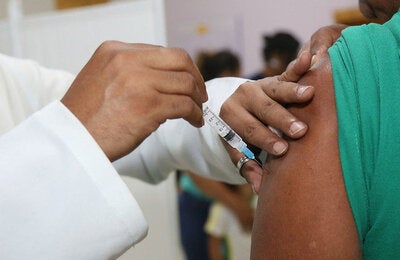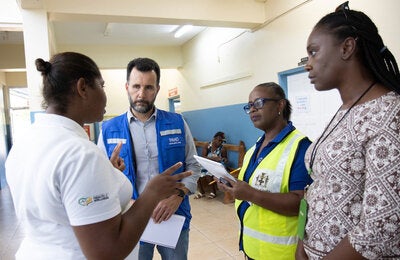
Washington, D.C., April 28, 2025 (PAHO) - On 19 April 2025, the Impact of using the Epidemic Intelligence from Open Sources (EIOS) system for early detection of public health threats in the Americas was published in the Weekly Epidemiological Record (WER) of the World Health Organization (WHO). As the WER is the official platform for sharing critical public health information globally, the publication highlights the role of the Pan American Health Organization (PAHO/WHO) in advancing the EIOS as an essential tool for epidemic intelligence.
Since 2019, PAHO has conducted EIOS training sessions across the Region of the Americas to support event-based surveillance as part of epidemic intelligence for early detection of public health threats. These efforts are aligned with the International Health Regulations (IHR) core surveillance and response capacities.
The published analysis examines data for 17 countries in the Americas trained on EIOS between August 2019 and October 2023: Argentina, Brazil, Canada, Chile, Colombia, Costa Rica, Cuba, Dominica, Ecuador, Guatemala, Guyana, Haiti, Honduras, Paraguay, Peru, Saint Lucia and Uruguay. During this period, PAHO conducted 105 training sessions, which introduced participants to the foundations of epidemic intelligence, the EIOS system, and signal detection.
The analysis illustrates key trends and impacts of the implementation of EIOS in the Region of the Americas, including:
- The number of new EIOS users and relevant sources monitored in the Region increased significantly between 2019 and 2023, expanding the scope and reach of detection capacities in the Region.
- Within one year of training, 88% of the participating countries incorporated the EIOS system into their routine surveillance activities:
- 24% became frequents users,
- 18% moderate users,
- 18% minimal users, and
- 29% ad-hoc users.
- Countries using EIOS showed a statistically significant increase in the proportion of events first detected and reported by the National IHR Focal Points (NFPs) and national government agencies in the first year after the EIOS trainings; the proportion increased from 68% to 85% overall. Improvements were observed among frequent users (from 73% to 89%), among moderate users (from 35% to 75%), and among ad-hoc users (from 94% to 100%). In contrast, countries with minimal or no EIOS use experienced a decline in proportions, from 80% to 74% and 50% to 33%, respectively.
- Timeliness of reporting improved notably for frequent (14 to 11 days), moderate (27 to 19 days), and ad-hoc usage (13 to 7 days). Faster reporting enables earlier responses to public health threats.
- Across all 56 countries and territories in the Region, those with any level of EIOS usage had higher proportions of Member States as the initial source of information during 2022, 2023, and 2024, compared with those with no EIOS usage. This trend reflects improved domestic ability to detect, assess, and communicate public health threats promptly and effectively.
Altogether, these findings confirm the positive impacts of EIOS implementation in strengthening early warning capabilities and ultimately mitigating the impact of acute public health events across the Region.
Read the full article from the Weekly Epidemiological Record (WER) of the World Health Organization (WHO).



